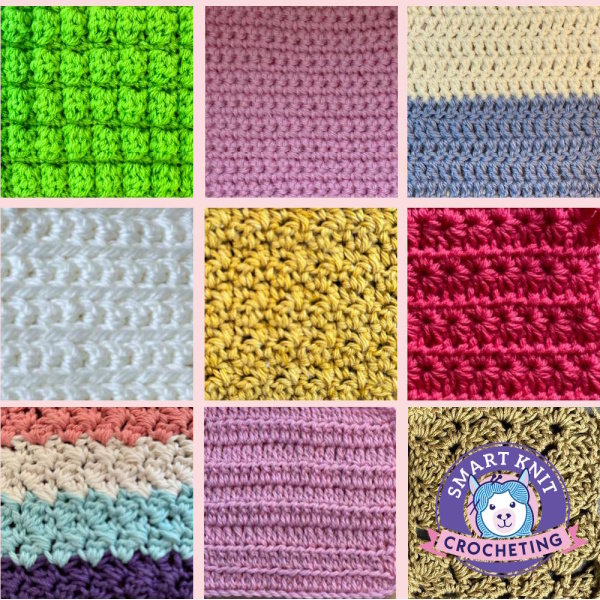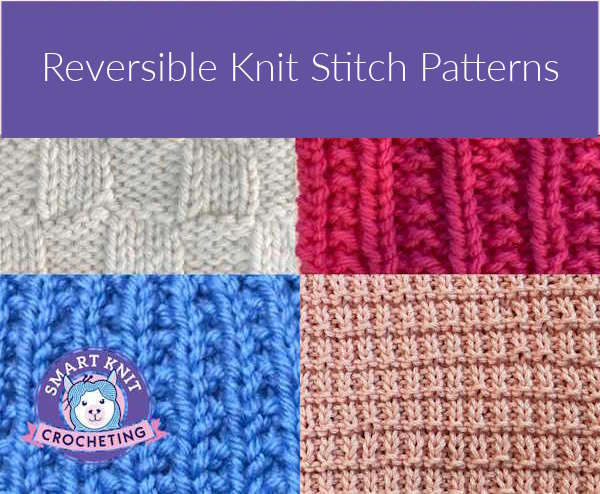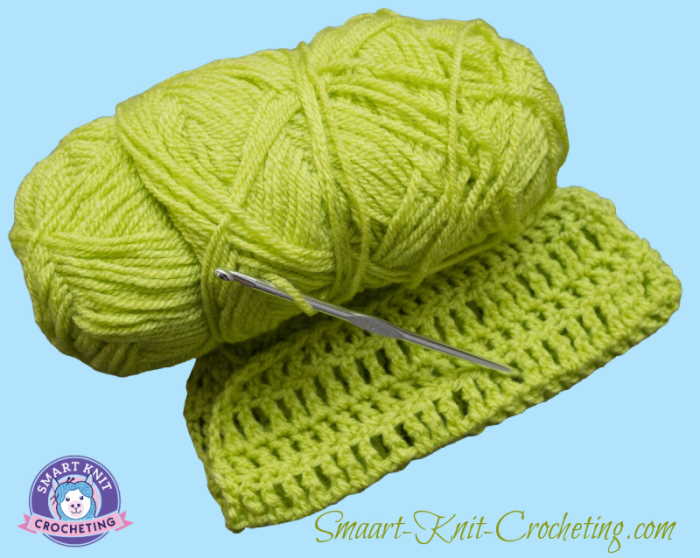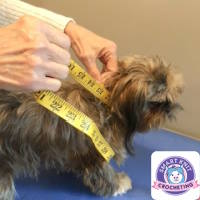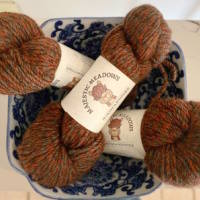- Home
- Cable Stitches
- Horseshoe Cable Stitch
Horseshoe Cable Stitch with Garter Border – Knitting Tutorial
The Horseshoe Cable Stitch is a classic cable pattern that creates an elegant, rounded twist resembling a horseshoe shape. Framing it with a garter stitch border gives the pattern a nice appearance and also helps to prevent curling.
In my version, a couple of purl stitches separate the cable section, and then I've added a garter border to provide for a finished appearance.
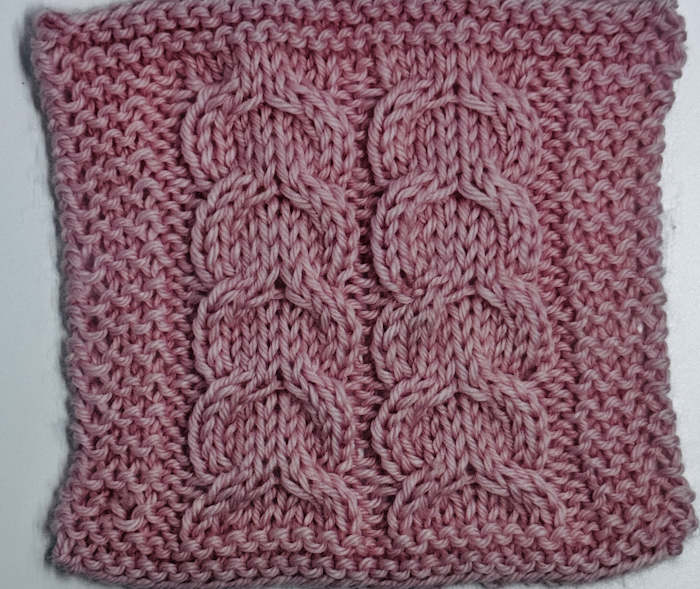
Skill Level
Intermediate — suitable for knitters comfortable with working cables and reading multi-row patterns. Adventureous beginners will find that the horseshoe cable is a good introduction to creating cables.
Skills Needed
- Knit (K)
- Purl (P)
- Cable stitch 2/2 Left Cross (2/2 LC)
- Cable Stitch 2/2 Right Cross (2/2 RC)
- Working from a written pattern
- Adding borders in garter stitch
- Cast on
- Bind off
Abbreviations
- K = Knit
- P = Purl
- 2/2 LC = Slip next 2 sts to cable needle, hold in front, K2 from left needle, K2 from cable needle
- 2/2 RC = Slip next 2 sts to cable needle, hold in back, K2 from left needle, K2 from cable needle
- RS = Right Side
- WS = Wrong Side
- rep = Repeat
- sts = Stitches
Notes About the Pattern
- The stitch is worked over a multiple of 10 + 2 stitches, plus 8 extra stitches for the garter borders.
- The border stitches are always worked in knit stitches on every row to create the garter effect.
- Cables are worked every 6th row, with plain knit rows in between for a rounded, pronounced look.
- You can adjust the number of cable repeats and border width to suit your project.
How to Make the 2/2 LC
The pattern will tell you to make a 2/2 LC, but probably won't explain how to do it.
The 2/2 LC is worked over a total of four stitches and leans towards the left. To make the cable, knit to the place where you will make the cable cross.
First, slip the next two stitches onto the cable needle and hold them in front of your work. You can just let it dangle.
Next, knit the next two stitches still on the left needle.
Finally, either slip the two stitches from the cable needle back onto the left needle and knit them, or knit them directly from the cable needle.
How to Make the 2/2 RC
The 2/2 RC is created similarly to the 2/2 LC, but the cable needle is held in the back of your work. This one, as the name implies, slants to the right.
First, knit up to the location where you will make this cross. Slip the first two stitches from the left needle to the cable needle and hold the cable needle in the back of your work.
Next, knit the next two stitches on the left needle.
Finally, either knit the stitches from the cable needle or slip them back to the left needle and knit them, whichever is easier for you to do.
Supplies Needed to Make a Practice Swatch
- Yarn: For this Swatch, I used Cascade 220 Superwash Yarn
- Needles: I used size 7 (4.5 mm) knitting needles
- Cable Needle: I used a thin aluminum needle slightly smaller than the size 7 knitting needles.
- Stitch marker (optional)
- Scissors
- Tapestry Needle for weaving in ends
Written Instructions – Worked Flat
Multiple of 10 + 2, plus 8 for borders
Cast On: 30 stitches.
Begin with: Knit 4 rows for the garter stitch border.
Row 1 (RS): K4, P2, *K8, P2; rep from * to last 4 sts, K4
Row 2 (WS): K4, *K2, P8; rep from * to last 6 sts, K6
Row 3 (RS): K4, P2, *K8, P2; rep from * to last 4 sts, K4
Row 4 (WS): K4, *K2, P8; rep from * to last 6 sts, K6
Row 5 (RS): K4, P2, *2/2 LC, 2/2 RC, P2; rep from * to last 4 sts, K4
Row 6 (WS): K4, *K2, P8; rep from * to last 6 sts, K6
Repeat Rows 1–6 until the desired length is reached.
End with 4 rows of garter stitch, then bind off knitwise.
Instructions for Worked in the Round
Multiple of 10 + 2, plus 8 for borders
Tip: When working in the round, garter stitch borders will need to alternate knit and purl rounds.
Cast On: Appropriate number of stitches for your project, maintaining the multiple and border counts.
Place a marker for the beginning of the round.
Round 1: K4, P2, *K8, P2; rep from * to last 4 sts, K4
Round 2: K4, *P2, K8; rep from * to last 4 sts, K4
Round 3: Repeat Round 1
Round 4: Repeat Round 2
Round 5: K4, P2, *2/2 LC, 2/2 RC, P2; rep from * to last 4 sts, K4
Round 6: Repeat Round 2
Repeat Rounds 1–6 until the desired length.
Finish with four rounds of garter stitch (alternating knit and purl rounds for borders), then bind off.
Frequently Asked Questions About the Horseshoe Cable
Can I work this without the border?
Can I work this without the border?
Yes. If you remove the garter stitch border, be aware that the fabric edges will curl. You can block it to reduce curling or plan to seam it into another piece.
What does 2/2 LC and 2/2 RC mean?
What does 2/2 LC and 2/2 RC mean?
These are 4-stitch cables. LC means the first two stitches are held to the front, RC means they are held to the back.
Can I use this stitch for a scarf?
Can I use this stitch for a scarf?
Absolutely. The border makes it perfect for scarves, as it will help keep the edges flat.
Pin Now, Knit Later
Conclusion
The Horseshoe Cable Stitch with Garter Border is a beautiful, versatile pattern that adds texture and elegance to your knitting projects. The combination of rounded cables and tidy garter edges makes it perfect for scarves, blankets, and statement panels in sweaters. Once you’ve mastered it, try experimenting with different cable widths or using it as a central panel in a larger design.

